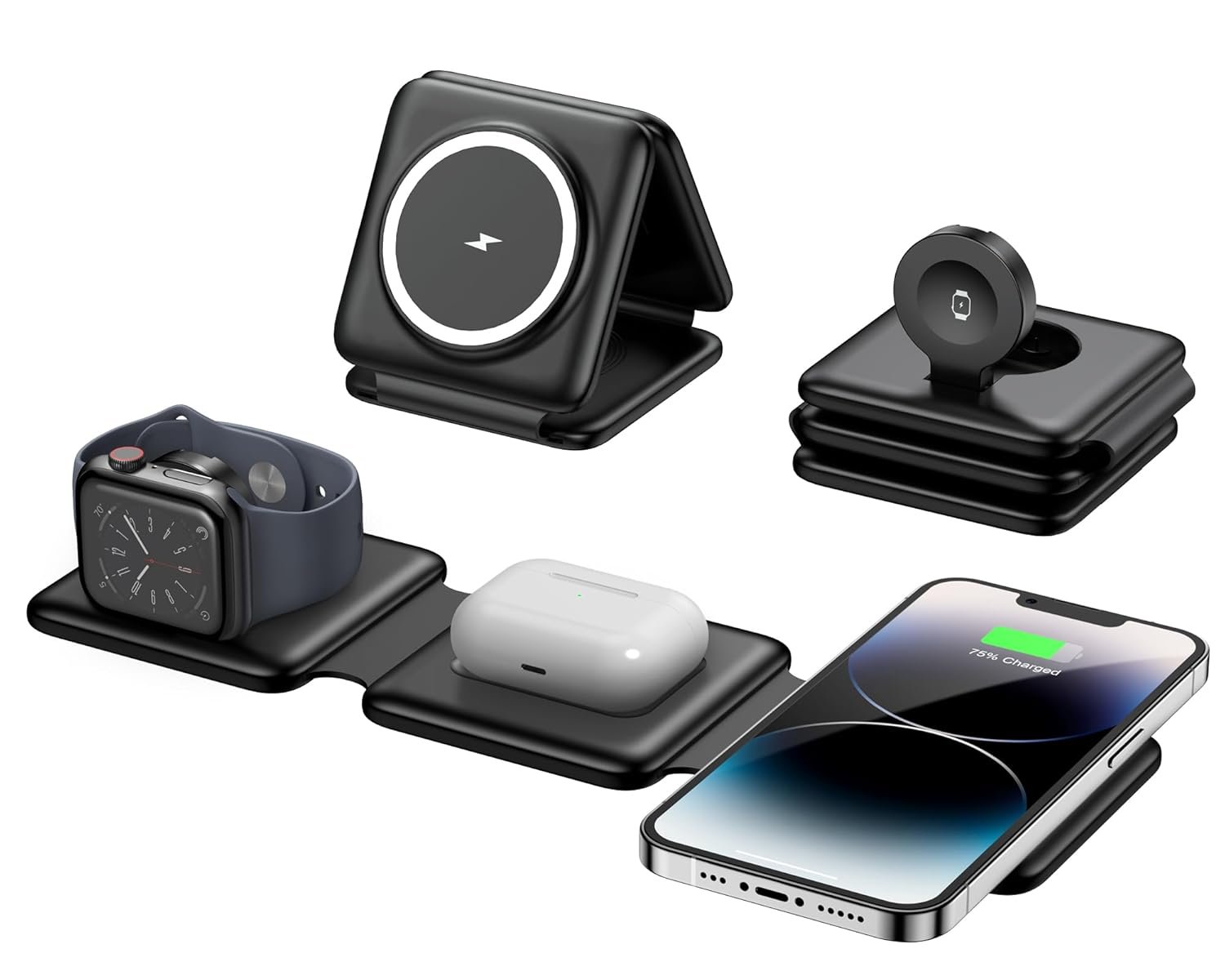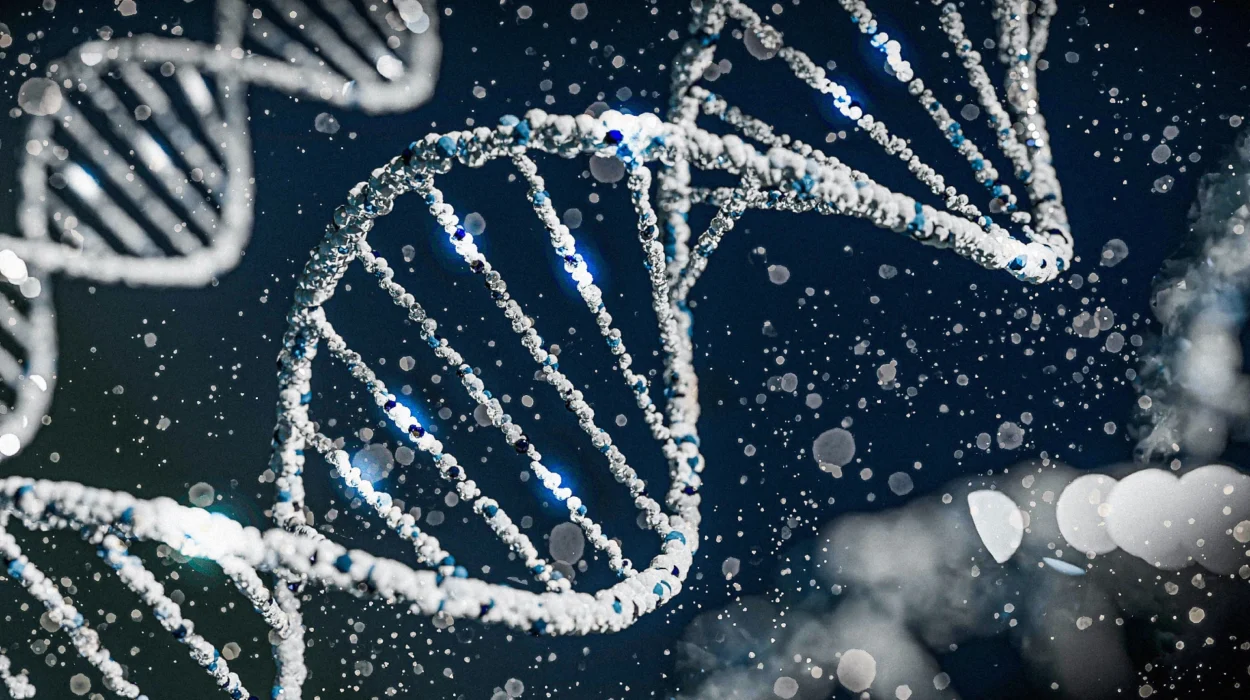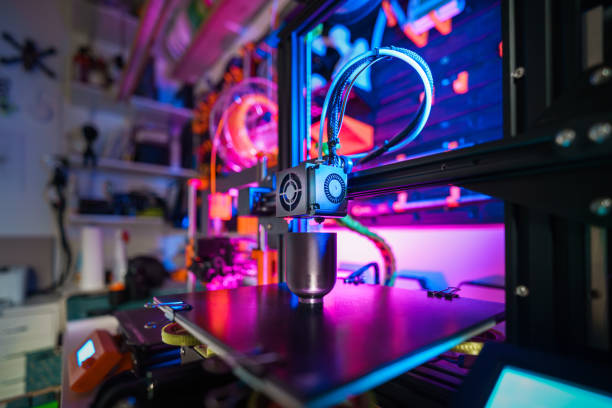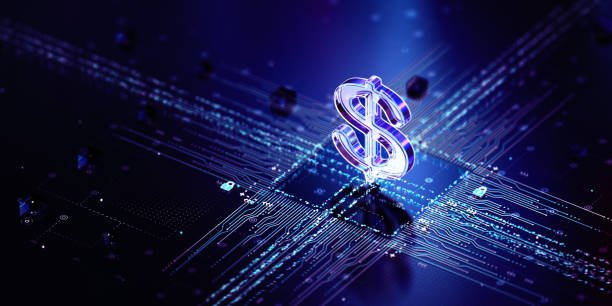In the hush of midnight, a glow pulses gently on a bedside table. A phone rests atop a smooth ceramic pad, charging without cables, without clicks or jostling connectors. It’s a small miracle we barely notice anymore. Our devices drink invisible power, as if by magic.
Wireless charging has become an intimate part of our daily rituals: dropping a phone on a café table embedded with a charging coil, setting our earbuds in their case to recharge, or simply plunking a smartwatch onto its magnetic cradle. There’s a quiet luxury in it—the relief of escaping tangled cords, of abandoning the frantic hunt for the right charger tip in the dark.
But behind that serene simplicity lies a story of physics, human ingenuity, and a technology older than most realize. How can electricity leap through thin air? Why does a phone still heat up while charging wirelessly? And what secrets does the future hold for a world where even our cars and kitchen counters might hum invisibly with energy?
To truly appreciate wireless charging, we must journey back to the birth of electromagnetism, peer into the swirling fields that govern our universe, and marvel at how a nineteenth-century curiosity evolved into twenty-first-century convenience.
Whispers of the Invisible World
Picture the laboratory of Michael Faraday in the 1830s—a clutter of copper wires, glass jars, iron cores, and flickering candles. Faraday, a man of modest origins and boundless curiosity, was chasing invisible forces. He believed the world was stitched together not merely by matter but by fields—intangible regions of influence radiating from magnets and electrical currents.
In 1831, Faraday discovered electromagnetic induction. When he moved a magnet near a coil of wire, he noticed a flicker on his galvanometer—a tiny electric current. He realized that changing magnetic fields could produce electricity. This was the seed from which modern power grids, motors, and transformers would grow.
Faraday’s insight opened a door to an invisible world. Electric fields could create magnetic fields, and vice versa, in a perpetual dance. Years later, James Clerk Maxwell translated these discoveries into elegant equations that would shape physics forever.
Within these swirling fields lies the secret of wireless charging. It’s not truly “wireless,” after all. It’s simply that the wires are replaced by invisible bridges of energy—magnetic fields reaching across space.
Tesla’s Dream of Wireless Power
Enter Nikola Tesla—a man who seemed half scientist, half wizard, striding through thunderstorms in a cape, hurling bolts of artificial lightning across his laboratory.
In the late 19th century, Tesla was obsessed with sending electricity through the air. He imagined towers transmitting energy across continents, lighting bulbs without wires, and powering vehicles from afar. At Colorado Springs, he built towering coils that spat arcs longer than a man is tall. Sparks crackled, instruments danced with static, and the townsfolk whispered that Tesla was summoning cosmic forces.
He demonstrated wireless lighting in the 1890s, using coils to induce currents in nearby bulbs. His dream was far grander: global wireless power. Though Tesla’s vision exceeded the technology of his era—and perhaps the laws of physics as we know them—his experiments laid conceptual groundwork. He showed that magnetic fields could indeed transfer power without wires.
Today’s wireless chargers are Tesla’s distant descendants. Though we’re not yet beaming power from continent to continent, we have captured a small piece of his dream—power flowing through air, silently, invisibly.
The Dance of Coils
Imagine you’re holding two hula hoops. One is connected to a battery, the other to a lightbulb. If you push electricity through the first hoop, a magnetic field bursts into existence, expanding and contracting as the current oscillates. Bring the second hoop close enough, and the magnetic field slithers through it like a ghost. Electrons begin to dance inside the second hoop, lighting the bulb.
This is the essence of inductive coupling—the physical principle behind nearly all wireless chargers today. Your smartphone’s wireless charging pad contains a coil of wire, often wound into a flat spiral. When plugged in, the charger drives an alternating current through this coil, creating a magnetic field that pulses millions of times per second.
Inside your phone is another coil, waiting patiently. When it enters the magnetic field, it feels invisible fingers tugging on its electrons. These electrons swirl into motion, creating electric current. That current feeds the battery, and your phone drinks power without ever touching a wire.
Yet this dance is delicate. The coils must be close—usually millimeters apart—for the magnetic field to be strong enough. Stray too far, and the field loses its grip, and your phone refuses to charge. This is why wireless charging pads often demand precise placement, sometimes accompanied by an annoyingly blinking LED if the alignment is off.
The Power of Resonance
Inductive coupling works beautifully—but only at short distances. Engineers yearned to push the boundaries further. The answer lay in a phenomenon familiar to anyone who’s ever played with tuning forks or musical instruments: resonance.
Two tuning forks of the same frequency will vibrate sympathetically if one is struck. In a similar way, two electrical coils can be tuned to the same resonant frequency. When they match, energy leaps between them far more efficiently. It’s as though the coils “sing” to each other across the air, vibrating in harmony.
In the early 2000s, researchers at MIT demonstrated resonant inductive coupling. They managed to light a 60-watt bulb two meters away from the power source, achieving around 40% efficiency. Suddenly, wireless power was no longer a curiosity but a practical tool. Their breakthrough gave birth to new commercial standards for wireless charging.
Modern wireless chargers, like those used for smartphones, sometimes incorporate resonance techniques to boost efficiency and reduce heat. Yet even resonance has limits: beyond a few centimeters, power transfer plummets or becomes dangerously high in stray fields.
Still, resonance is why wireless chargers have become more forgiving. Modern pads often accept phones placed at slightly odd angles, thanks to overlapping coils and smart frequency matching.
Qi: The Secret Code of Wireless Charging
Flip over the packaging of almost any wireless charger, and you’ll see a word: Qi (pronounced “chee”). In Chinese, it means “life energy”—a poetic choice for a technology transmitting invisible power.
Qi is the global standard for wireless charging, created by the Wireless Power Consortium. It governs how devices talk to chargers, negotiate power levels, and avoid overheating. Without a shared language, chargers and phones would be incompatible, like two people shouting in different dialects across a crowded room.
When you place your phone on a Qi charger, a conversation begins. The charger sends low-power pulses, asking the device, “Are you there? What do you need?” The phone responds, announcing its power requirements. Only then does the charger ramp up the juice.
This communication prevents disasters. Imagine the chaos if a tiny earbud received the same current as a tablet. Qi protocols ensure every device gets only the power it safely needs.
Yet even Qi has struggled to keep pace with our hunger for speed. Early Qi chargers trickled power at 5 watts—a tortoise pace compared to wired fast charging. Today, newer Qi revisions support 15, 30, or even higher wattages. Some brands—like Xiaomi and Oppo—claim to deliver over 50 watts wirelessly, though often using proprietary tweaks.
Speed, however, comes at a price: heat. High-speed wireless charging can make a phone grow alarmingly warm. Some manufacturers have turned to fans and elaborate heat sinks in chargers. Others throttle power to avoid cooking your battery.
It’s a delicate balancing act: the desire for rapid charging versus the perils of heat and battery degradation.
Why Does Wireless Charging Get Hot?
Anyone who’s touched the back of a phone after wireless charging knows the truth: it’s not always cool and effortless. A faint warmth—or even alarming heat—often radiates from the device and charger.
The culprit is inefficiency. No system is perfect. When magnetic fields induce currents, some energy transforms into heat rather than usable electricity. Resistance in the coils, eddy currents swirling in nearby metal parts, and imperfect alignment all waste energy. Even small misalignments can dramatically reduce efficiency.
A typical wired charger might boast 90% or higher efficiency. Wireless chargers often hover between 60-80%. That gap manifests as heat. Manufacturers combat it with smarter circuitry, better coil designs, and materials that absorb less stray energy.
Beyond inefficiency, there’s another subtle problem: wireless charging can keep a device warmer even after it’s full. Wired chargers often cut power entirely once a battery reaches 100%. But wireless chargers sometimes maintain a trickle charge to keep the connection alive, subtly warming the battery over hours.
Heat is the enemy of lithium-ion batteries. It accelerates chemical degradation, reducing capacity and lifespan. This is why some experts advise using wireless charging sparingly—or at least avoiding high-speed modes unless truly necessary.
Yet the allure of cable-free life is powerful. Users accept a bit of warmth in exchange for the magic of simply setting a device down and walking away.
Magnetic Alignment: The MagSafe Revolution
In 2020, Apple introduced a twist on wireless charging: MagSafe. The name harkens back to older magnetic laptop chargers, but the new system brought magnets into the wireless world.
MagSafe embeds a ring of magnets inside the iPhone’s chassis and the charger puck. The moment you bring them close, they snap into perfect alignment. No more nudging a phone on the pad, hoping the coils will align. With MagSafe, the coils lock into place automatically, ensuring optimal energy transfer.
Beyond convenience, MagSafe enables new accessories—wallets that cling magnetically, snap-on cases, and even car mounts that hold your phone firmly while charging.
Competitors quickly responded with their own magnetic systems. The magnets add cost and complexity, but they solve one of wireless charging’s biggest annoyances: alignment.
Magnetic positioning is crucial for higher power levels. At 15 watts or above, even slight coil misalignments can cause dramatic efficiency loss or overheating. Magnets transform wireless charging from a sometimes-fussy ritual into a reliably satisfying “click.”
The Promise—and Perils—of Long-Range Wireless Power
Most wireless charging today demands close proximity. But what if your phone could sip power simply by being in the room? Could we live in homes where lamps, TVs, and laptops all charge continuously, no wires needed?
Long-range wireless power is the holy grail. Several companies have unveiled prototypes using radio frequency (RF) waves, infrared beams, or ultrasound. These systems spray power into the air, captured by antennas or photovoltaic cells inside devices.
In theory, it’s dazzling: your smart home recognizes devices as they enter and silently beams power where needed. Batteries shrink. Gadgets remain perpetually topped up.
But in practice, challenges loom large. Safety regulations limit how much RF energy can fill a room. High-power beams raise concerns about human health, pets, and interference with other electronics. And efficiency plunges rapidly with distance.
Infrared and laser systems promise higher efficiency, but require line-of-sight and precise aiming. Stray reflections could damage eyes or overheat unintended objects. It’s no accident that most demonstrations involve modest power levels—just enough to trickle-charge low-energy devices like sensors or smart tags.
Still, research marches on. Startups envision warehouses where robots recharge wirelessly while working. Hospitals explore wireless power to reduce infection risks from cables. Smart homes might one day embed invisible energy grids in ceilings and floors.
For now, true room-scale wireless power remains a tantalizing vision rather than a daily reality. But the pace of innovation suggests the day may come when devices truly live without wires—and even without visible chargers.
Wireless Cars and Highways
Beyond phones and earbuds lies a larger frontier: electric vehicles. Imagine highways embedded with coils, charging your car as you drive. Stops at charging stations could vanish entirely. Your daily commute would become an invisible refueling trip.
Such systems already exist in pilot form. Bus routes in South Korea, taxi lanes in Norway, and demonstration highways in the U.S. have tested dynamic wireless charging. Coils buried beneath asphalt create magnetic fields that power vehicles equipped with receiving coils.
Yet hurdles remain. Infrastructure costs are staggering. Power losses over long coils can be high. And coordinating billing—how each car pays for the energy it draws—poses regulatory headaches.
Still, wireless charging for parked EVs is moving closer to market. BMW, Hyundai, and other manufacturers have tested garage-floor chargers that let drivers simply park and charge. No plugging in, no cables to wrestle.
For EV owners, this represents more than convenience. It could enable faster adoption of shared vehicles, autonomous fleets, and new models of urban mobility.
Environmental Costs and the Ethics of Wireless Power
Wireless charging seduces us with convenience—but convenience has a cost. The lower efficiency of wireless power means higher overall energy use. Multiply this across billions of devices worldwide, and the electricity wasted as heat becomes significant.
Environmental advocates caution that as wireless charging grows, we must balance desire for cable-free living with sustainability. Manufacturers continue to improve coil designs, materials, and software to narrow the efficiency gap.
Ethical debates also swirl around long-range wireless power. Should companies beam RF energy across offices or homes, adding to the invisible electromagnetic soup in which we already live? Regulators must weigh potential health risks, however small, against the benefits.
And there’s a digital divide issue. Wireless chargers and MagSafe accessories often cost significantly more than wired alternatives. As charging tech evolves, it risks becoming a luxury rather than a universal convenience.
A Glimpse Into Tomorrow
Peering into the future of wireless charging feels like gazing into Faraday’s flickering workshop or Tesla’s lightning-slashed towers. The road ahead brims with possibility:
- Faster wireless charging approaching wired speeds, without overheating.
- Seamless surfaces—tables, desks, car consoles—that charge multiple devices anywhere they’re placed.
- Smart homes where devices negotiate power needs autonomously.
- Electric vehicles sipping power invisibly while parked or moving.
- Entire rooms blanketed in gentle energy fields, freeing us forever from plugs.
Yet technological progress is seldom linear. Physics imposes hard limits. Efficiency, safety, and cost will remain constant battles. The future may blend wireless and wired solutions, each serving specific roles.
Still, there’s no denying the appeal of a life liberated from cables. It’s a vision as poetic as it is practical—a world where energy flows as freely as information, unbound by copper and plastic.
The Magic Beneath the Surface
Tonight, as you place your phone on its pad and watch the charging symbol bloom onto the screen, remember this:
Within that tiny device, coils pulse with invisible currents. Magnetic fields spiral outward, wrapping the air in unseen loops. Electrons dance, obeying laws discovered by dreamers centuries ago. Tesla’s towering arcs, Faraday’s spinning magnets—they echo, faintly, each time your phone drinks wireless power.
Wireless charging may feel like magic. But it’s a magic built on real physics, on sweat and sparks, on centuries of human wonder at the hidden forces that bind the universe.
So when you wake tomorrow, phone full and cords untangled, know that you’re cradling a miracle born of science—and a promise of how much more the invisible world has yet to give.






